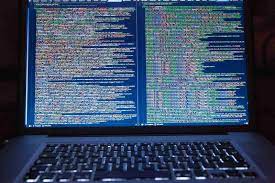“1.4: Identifying and Correcting Errors” Everything You Need to Know

Table of Contents
Toggle“Identifying and Correcting Errors” Everything You Need to Know
Errors are an inevitable part of any process—whether you’re writing an article, developing software, managing projects, or even navigating daily life. Yet, the ability to effectively identify and correct errors is a critical skill that can significantly enhance quality, efficiency, and overall success. In this comprehensive guide, we will explore the art and science of Identifying and Correcting Errors. We’ll define what this process entails, delve into its historical evolution, break down its key components, and examine its applications across various fields. By the end of this post, you’ll understand why identifying and correcting errors is essential, learn practical strategies to implement it, and discover how continuous improvement can lead to better outcomes in every aspect of your work and life.
Introduction: The Critical Role of Identifying and Correcting Errors
Have you ever wondered why even the most experienced professionals make mistakes—and more importantly, how they bounce back from them? Studies show that organizations with robust error management processes can increase efficiency by up to 30% and significantly improve product quality. This isn’t just about catching typos or debugging code; it’s about creating a culture where errors are viewed as opportunities for learning and growth.
In this post, we will cover:
- A clear definition of Identifying and Correcting Errors.
- The historical context and evolution of error management strategies.
- An in-depth exploration of the key steps and methodologies used to detect and fix errors.
- Real-world examples and case studies illustrating effective error correction in various fields.
- The importance and benefits of a proactive approach to error management.
- Common misconceptions and frequently asked questions.
- Modern trends and emerging practices in error identification and correction.
Join us as we dive deep into the strategies and techniques that can transform errors from setbacks into stepping stones for continuous improvement.
What Is Identifying and Correcting Errors? A Straightforward Definition
Identifying and Correcting Errors refers to the systematic process of detecting mistakes, inconsistencies, or deviations from a desired standard and implementing measures to correct them. This process is essential across multiple domains, from academic writing and data analysis to manufacturing and software development.
Essential Characteristics
Systematic Detection:
The process begins with careful scrutiny to spot any deviations, whether they are logical, factual, or procedural.Timely Intervention:
Once an error is identified, corrective actions are taken promptly to minimize negative impacts.Continuous Improvement:
Beyond immediate correction, the process involves analyzing errors to understand their root causes and implement changes that prevent recurrence.Adaptability:
The methods used to identify and correct errors must be flexible and evolve with new challenges, technologies, and environments.Data-Driven Analysis:
Effective error management often relies on measurable indicators, feedback systems, and iterative testing to ensure that corrections are effective and sustainable.
Understanding these elements is key to appreciating how robust error management can drive efficiency, enhance quality, and foster an environment of continuous learning.
Historical and Contextual Background
The systematic approach to Identifying and Correcting Errors has evolved significantly over time, influenced by advancements in science, technology, and management practices. Understanding this historical context provides insight into why modern error management strategies are so effective.
Early Beginnings
Primitive Systems and Manual Corrections:
In early civilizations, error correction was a rudimentary process. Scribes and craftsmen corrected mistakes manually, often relying on repeated practice and peer review. While the methods were basic, the underlying principle was the same: learn from mistakes to improve future performance.The Advent of the Scientific Method:
The emergence of the scientific method in the 17th century brought about a more systematic approach to error identification. Experimentation, observation, and replication became key practices in ensuring that scientific errors were identified and corrected, paving the way for modern quality control processes.
Milestones in Error Management
Industrial Revolution and Quality Control:
The Industrial Revolution introduced mass production and the need for standardized processes. Pioneers like W. Edwards Deming and Joseph Juran developed quality control and continuous improvement methodologies, such as the Plan-Do-Check-Act (PDCA) cycle, which formalized the process of error identification and correction in manufacturing and business operations.Advances in Information Technology:
With the rise of computer science and digital technology in the late 20th century, error detection and correction took on new dimensions. In software development, debugging became a critical skill, and methodologies like Agile and Lean began to emphasize iterative testing and continuous feedback loops to quickly identify and fix errors.
The Modern Era
Data Analytics and Machine Learning:
Today, the process of identifying and correcting errors has been revolutionized by data analytics and artificial intelligence. These technologies enable organizations to detect patterns, predict potential errors, and implement automated corrections, thereby reducing human error and increasing overall efficiency.Cultural Shifts in Error Management:
Modern organizations are increasingly adopting a “fail fast, learn fast” mindset. Instead of stigmatizing mistakes, companies encourage open discussion and rapid iteration. This cultural shift has been instrumental in fostering innovation and continuous improvement across various sectors.
Historical evolution shows us that the methods for identifying and correcting errors have grown more sophisticated over time. Today’s approaches combine traditional quality control principles with advanced technology and a progressive mindset, ensuring that errors are not only fixed but also used as catalysts for improvement.
In-Depth Exploration: Key Components of Identifying and Correcting Errors
To master the process of Identifying and Correcting Errors, it’s essential to understand its key components. In this section, we break down the process into manageable steps and explore the tools, techniques, and best practices involved.
1. Error Identification: Spotting the Mistakes
Techniques for Detection
Manual Review and Proofreading:
In fields like writing and data entry, human review is often the first line of defense. Techniques include reading aloud, peer reviews, and checklists to ensure all potential errors are caught.Automated Tools:
Technology has given us a variety of tools designed to detect errors. For example:- Spell Checkers and Grammar Tools:
Software like Grammarly and Microsoft Word’s built-in tools can catch language errors. - Code Linters and Debuggers:
In software development, tools such as ESLint, PyLint, and integrated development environment (IDE) debuggers help identify syntax and logic errors. - Data Validation Systems:
In data management, automated scripts and validation rules can detect inconsistencies or outliers in large datasets.
- Spell Checkers and Grammar Tools:
Establishing a Baseline
Defining Standards:
Before errors can be identified, clear standards and benchmarks must be established. These may include style guides, coding standards, or quality criteria that define what constitutes an error.Regular Audits and Reviews:
Systematic reviews and audits are essential to ensure that errors are consistently identified. These processes often involve checklists, performance metrics, and peer evaluations.
2. Root Cause Analysis: Understanding Why Errors Occur
Tools and Methodologies
The “5 Whys” Technique:
This simple yet powerful method involves asking “why” repeatedly until the root cause of an error is uncovered.Fishbone Diagrams (Ishikawa Diagrams):
These diagrams help map out the various factors that could be contributing to an error, allowing teams to visualize the relationship between cause and effect.Pareto Analysis:
Based on the 80/20 rule, Pareto analysis helps identify the most common sources of errors. By focusing on the few causes that generate the majority of problems, organizations can address issues more effectively.
Case Study: Software Debugging
Consider a software development team facing repeated crashes in their application. By employing the “5 Whys” technique, they discover that the root cause is not the user input or interface, but a memory leak in a rarely used module. Using this insight, the team is able to focus its debugging efforts and implement a robust solution, ultimately improving the application’s stability.
3. Corrective Actions: Fixing the Errors
Immediate Corrections vs. Long-Term Solutions
Quick Fixes:
In many cases, errors require immediate attention to prevent further issues. These “quick fixes” might involve patching software bugs, correcting data entry mistakes, or revising a document.Systemic Changes:
For recurring errors, long-term solutions are necessary. This may involve revising processes, retraining staff, or implementing new technologies that address the underlying issues.
Best Practices for Effective Correction
Documenting the Process:
Keep detailed records of errors and the steps taken to correct them. This documentation not only serves as a reference for future issues but also helps in continuous improvement efforts.Testing and Verification:
After corrections are implemented, rigorous testing is essential to ensure that the error has been fully resolved. This may involve unit testing, regression testing, or quality assurance reviews.Feedback Loops:
Establish channels for ongoing feedback. Whether through regular meetings, surveys, or digital feedback tools, continuous input from stakeholders is critical for verifying the effectiveness of corrective actions.
4. Prevention and Continuous Improvement
Strategies to Prevent Recurrence
Process Optimization:
Regularly review and refine processes to eliminate conditions that lead to errors. This might involve adopting new technologies, revising procedures, or incorporating best practices from industry leaders.Training and Education:
Invest in training programs that educate team members about common errors and best practices for avoiding them. Knowledge sharing sessions, workshops, and seminars can help foster a culture of continuous improvement.Automation and Monitoring:
Implement automated monitoring systems that alert teams to potential errors before they become significant issues. For example, automated testing in software development can catch errors early in the development cycle.
Embracing a Culture of Learning
Constructive Feedback:
Encourage an environment where feedback is seen as an opportunity for improvement rather than criticism. This shift in mindset can lead to more proactive error management.Celebrating Successes:
Recognize and reward teams that successfully identify and correct errors. Celebrating these successes reinforces the importance of error management and motivates continuous improvement.
The Importance, Applications, and Benefits of Identifying and Correcting Errors
Understanding and mastering the process of Identifying and Correcting Errors is invaluable across various fields. Here’s why this practice is so important and the benefits it brings:
Enhancing Quality and Efficiency
Reduced Waste:
Correcting errors promptly prevents further issues down the line, saving time, money, and resources.Improved Quality:
Continuous error correction leads to higher-quality outputs, whether in product development, academic research, or creative endeavors.Increased Efficiency:
By streamlining processes and eliminating recurring errors, organizations can operate more efficiently and respond more rapidly to changes.
Driving Innovation and Competitive Advantage
Fostering a Culture of Continuous Improvement:
Organizations that prioritize error management create an environment where learning and innovation thrive. Mistakes become valuable lessons that drive future success.Building Trust and Credibility:
Consistently delivering high-quality results through diligent error correction builds trust among customers, stakeholders, and team members.Enhancing Problem-Solving Skills:
The process of identifying and correcting errors sharpens analytical skills and fosters a proactive approach to problem-solving—an essential quality in today’s competitive landscape.
Applications Across Domains
Education:
In academic settings, identifying and correcting errors is crucial for improving student performance, refining curricula, and advancing research.Technology and Software Development:
Debugging and quality assurance are central to software development. Effective error management can be the difference between a successful application and one that fails in the market.Business and Manufacturing:
In business, operational errors can lead to significant financial losses. Robust quality control and process improvement strategies are essential for maintaining competitive advantage.Healthcare:
In medical settings, identifying and correcting errors can literally save lives. From medication administration to diagnostic processes, robust error management improves patient outcomes and safety.
Addressing Common Misconceptions and FAQs
Despite its proven benefits, several misconceptions about Identifying and Correcting Errors persist. Let’s clear up some common myths and answer frequently asked questions.
Common Misconceptions
Misconception 1: “Errors are Always Bad and Should Be Punished.”
Reality: Errors are a natural part of any process. A proactive approach focuses on understanding and correcting errors rather than assigning blame.Misconception 2: “Once an Error Is Corrected, the Problem Is Solved.”
Reality: While immediate corrections are necessary, it’s equally important to address the root causes to prevent recurrence.Misconception 3: “Automated Tools Can Catch Every Error.”
Reality: Automated tools are invaluable, but they are not infallible. Human oversight and contextual understanding remain critical components of effective error management.
Frequently Asked Questions (FAQs)
Q1: How can I improve my ability to identify errors?
A1: Combine automated tools with manual review processes, establish clear standards, and foster a culture of attention to detail and continuous learning.
Q2: What is the best way to address recurring errors?
A2: Conduct a root cause analysis using techniques like the “5 Whys” or fishbone diagrams, and then implement systemic changes to eliminate the underlying causes.
Q3: How often should error management processes be reviewed?
A3: Regular reviews are essential—ideally on a quarterly or annual basis, or whenever significant changes occur in your operational environment.
Q4: Can identifying and correcting errors lead to innovation?
A4: Absolutely. By learning from mistakes and continuously improving processes, organizations often uncover innovative solutions and new opportunities.
Modern Relevance and Current Trends in Identifying and Correcting Errors
The practice of identifying and correcting errors is evolving alongside advancements in technology and management theory. Here are some modern trends shaping the future of error management:
Technological Innovations
Artificial Intelligence and Machine Learning:
AI-powered tools are now capable of detecting errors that might elude human reviewers. These systems can analyze vast amounts of data in real time, predict potential errors, and even suggest corrective actions.Big Data Analytics:
By harnessing big data, organizations can identify error patterns across large datasets. This allows for proactive interventions and continuous improvement in processes.Automation and Continuous Integration:
In software development and manufacturing, continuous integration systems automatically test and deploy code changes, rapidly identifying errors and reducing downtime.
Cultural Shifts in Error Management
Embracing a “Fail Fast, Learn Fast” Mindset:
Modern organizations are shifting away from punitive approaches and instead encouraging experimentation and rapid iteration. This culture views errors as valuable learning opportunities that drive progress.Collaborative Error Correction:
Teams are increasingly adopting collaborative approaches to error management, using tools that facilitate communication and collective problem-solving. Open feedback loops and cross-functional teams ensure that errors are addressed holistically.
Industry-Specific Developments
Healthcare:
In medicine, advanced monitoring systems and electronic health records are being used to reduce errors and improve patient safety.Education:
Adaptive learning platforms that identify errors in student performance are revolutionizing personalized education, enabling educators to tailor instruction to individual needs.Manufacturing and Quality Control:
With the rise of Industry 4.0, smart factories use sensors and real-time analytics to detect production errors immediately, ensuring higher quality products and more efficient operations.
Practical Applications: Mastering the Art of Identifying and Correcting Errors
Here are actionable strategies to help you implement effective error management in your work and personal projects:
Step 1: Establish Clear Standards and Protocols
Define What Constitutes an Error:
Develop guidelines and checklists that outline common errors and the criteria for identifying them.Implement Regular Audits:
Schedule systematic reviews and audits to monitor performance and catch errors early.
Step 2: Utilize the Right Tools
Automated Detection Tools:
Invest in software and technologies suited to your field—whether it’s spell checkers, debuggers, or data validation tools—to assist in identifying errors.Manual Reviews:
Complement automated systems with regular manual checks. Peer reviews, proofreading sessions, and team debriefs can uncover errors that machines might miss.
Step 3: Analyze and Understand Root Causes
Conduct Root Cause Analysis:
Use techniques like the “5 Whys” and fishbone diagrams to delve into why errors are occurring. This insight is critical for long-term improvements.Document Findings:
Maintain a record of common errors and their causes to inform future training and process adjustments.
Step 4: Implement Corrective Actions and Preventative Measures
Immediate Fixes:
Address errors as soon as they’re detected to minimize any cascading impacts.Systemic Improvements:
Adjust processes, update protocols, and invest in training to prevent similar errors from occurring in the future.
Step 5: Monitor, Evaluate, and Adapt
Set Key Performance Indicators (KPIs):
Establish metrics to monitor the frequency and impact of errors. Regularly review these metrics to assess improvements.Feedback Loops:
Encourage team members to provide feedback on error management processes, and be open to making iterative changes based on their input.
Step 6: Foster a Culture of Continuous Improvement
Encourage Open Dialogue:
Create a safe space for discussing errors without fear of blame. This transparency fosters learning and innovation.Celebrate Improvements:
Recognize and reward teams that successfully identify and correct errors, reinforcing the value of continuous improvement.
Conclusion: Embracing the Power of Identifying and Correcting Errors
Effective Identifying and Correcting Errors is more than just a technical process—it is a strategic approach that can transform setbacks into opportunities for growth and innovation. By establishing clear standards, utilizing the right tools, understanding the root causes of errors, and fostering a culture of continuous improvement, you can significantly enhance the quality and efficiency of your work.
Key Takeaways
Proactive Detection:
Establish robust methods for detecting errors early, whether through automated tools or manual reviews.Systematic Correction:
Address errors promptly with both immediate fixes and long-term strategies to prevent recurrence.Continuous Learning:
Use every error as an opportunity to learn, adapt, and refine your processes.Cultural Change:
Cultivate a work environment where errors are seen as stepping stones to improvement rather than failures.
Call-to-Action
Reflect on your own projects and processes—what errors are you encountering, and how can you improve your methods for identifying and correcting them? Use the strategies outlined in this guide to build a proactive error management framework. We invite you to share your experiences, ask questions, and engage with our community as we continue to explore best practices in error management.
If you found this guide helpful, please share it with colleagues, friends, or anyone looking to enhance their problem-solving skills and operational efficiency. For more insights on continuous improvement and quality management, check out reputable resources such as Harvard Business Review and Forbes.
Additional Resources and Further Reading
For those eager to dive deeper into the world of Identifying and Correcting Errors, here are some valuable resources:
Books:
- “The Lean Startup: How Today’s Entrepreneurs Use Continuous Innovation to Create Radically Successful Businesses” by Eric Ries
- “Out of the Crisis” by W. Edwards Deming
- “Bug Busters: A Guide to Effective Error Management” (Fictional title for conceptual purposes—seek out quality texts on quality management and continuous improvement)
Online Courses and Workshops:
Websites and Articles:
Communities and Forums:
- Engage with professional networks on LinkedIn, Reddit, or specialized forums where quality control and error management are discussed by industry experts.
Final Thoughts
In a world where perfection is often the goal, understanding that errors are a natural—and even beneficial—part of any process is liberating. By embracing Identifying and Correcting Errors as an integral part of continuous improvement, you can turn potential setbacks into powerful opportunities for innovation and growth.
Take the time today to review your current practices, set up robust error management processes, and foster a culture where mistakes lead to valuable insights. Every step you take towards better error management not only improves the quality of your work but also builds resilience and adaptability in the face of future challenges.
Thank you for exploring this comprehensive guide on Identifying and Correcting Errors. We look forward to hearing your success stories and insights. Please leave your comments below, share this post with your network, and join our ongoing conversation about how we can all achieve excellence through continuous improvement.
Happy error hunting—and even happier correcting!
Recent Posts
- “3.10: Lists” Everything You Need to Know
- “3.9: Developing Algorithms” Everything You Need to Know
- “3.8: Iteration” Everything You Need to Know
- “3.7: Nested Conditionals” Everything You Need to Know
- “3.6: Conditionals” Everything You Need to Know
- “3.5: Boolean Expressions” Everything You Need to Know
- “3.4: Strings” Everything You Need to Know
- “3.3: Mathematical Expressions” Everything You Need to Know
- “3.2: Data Abstraction” Everything You Need to Know
- “3.1: Variables and Assignments” Everything You Need to Know
- “Unit 3 Overview: Algorithms and Programming” Everything You Need to Know
- “2.4: Using Programs with Data” Everything You Need to Know
- “2.3: Extracting Information from Data” Everything You Need to Know
- “2.2: Data Compression” Everything You Need to Know
- “2.1: Binary Numbers” Everything You Need to Know
Choose Topic
- ACT (17)
- AP (20)
- AP Art and Design (5)
- AP Physics 1 (1)
- AQA (5)
- Artificial intelligence (AI) (2)
- Banking and Finance (6)
- Biology (13)
- Business Ideas (68)
- Calculator (72)
- ChatGPT (1)
- Chemistry (3)
- Colleges Rankings (48)
- Computer Science (4)
- Conversion Tools (136)
- Cosmetic Procedures (50)
- Cryptocurrency (49)
- Digital SAT (3)
- Edexcel (4)
- English (1)
- Environmental Science (2)
- Etiology (7)
- Exam Updates (1)
- Finance (129)
- Fitness & Wellness (164)
- Free Learning Resources (210)
- GCSE (1)
- General Guides (40)
- Health (107)
- History and Social Sciences (152)
- IB (1)
- IGCSE (2)
- Image Converters (3)
- IMF (10)
- Math (43)
- Mental Health (58)
- News (11)
- OCR (3)
- Past Papers (463)
- Physics (5)
- SAT (39)
- Schools (3)
- Sciences (1)
- Short Notes (5)
- Study Guides (28)
- Syllabus (19)
- Tools (1)
- Tutoring (1)
- What is? (312)
Recent Comments

“1.4: Identifying and Correcting Errors” Everything You Need to Know

“1.3: Program Design and Development” Everything You Need to Know

“1.2: Program Function and Purpose” Everything You Need to Know

“1.1: Collaboration” Everything You Need to Know

“3.10: Lists” Everything You Need to Know

“3.9: Developing Algorithms” Everything You Need to Know

“3.8: Iteration” Everything You Need to Know

